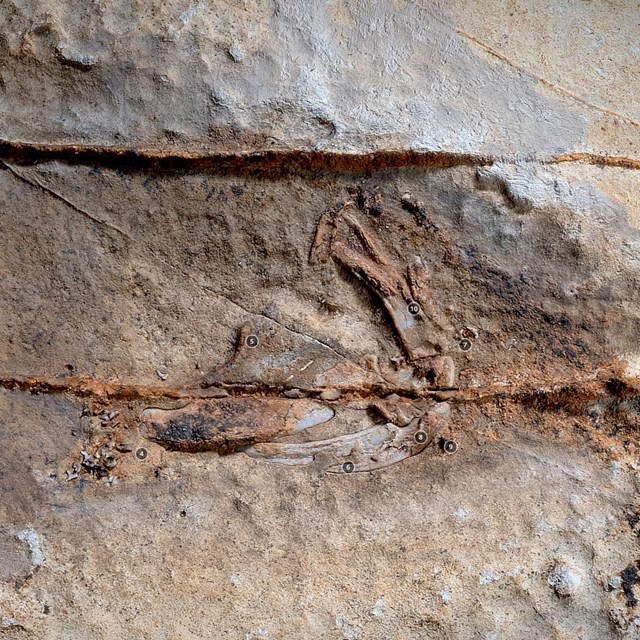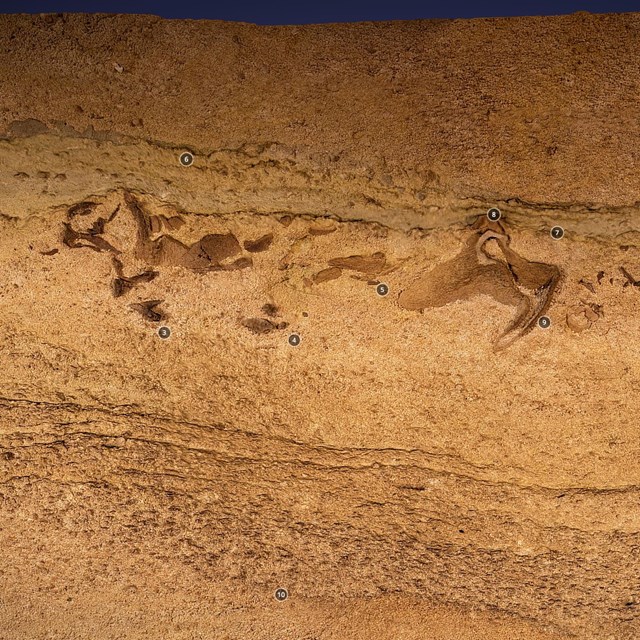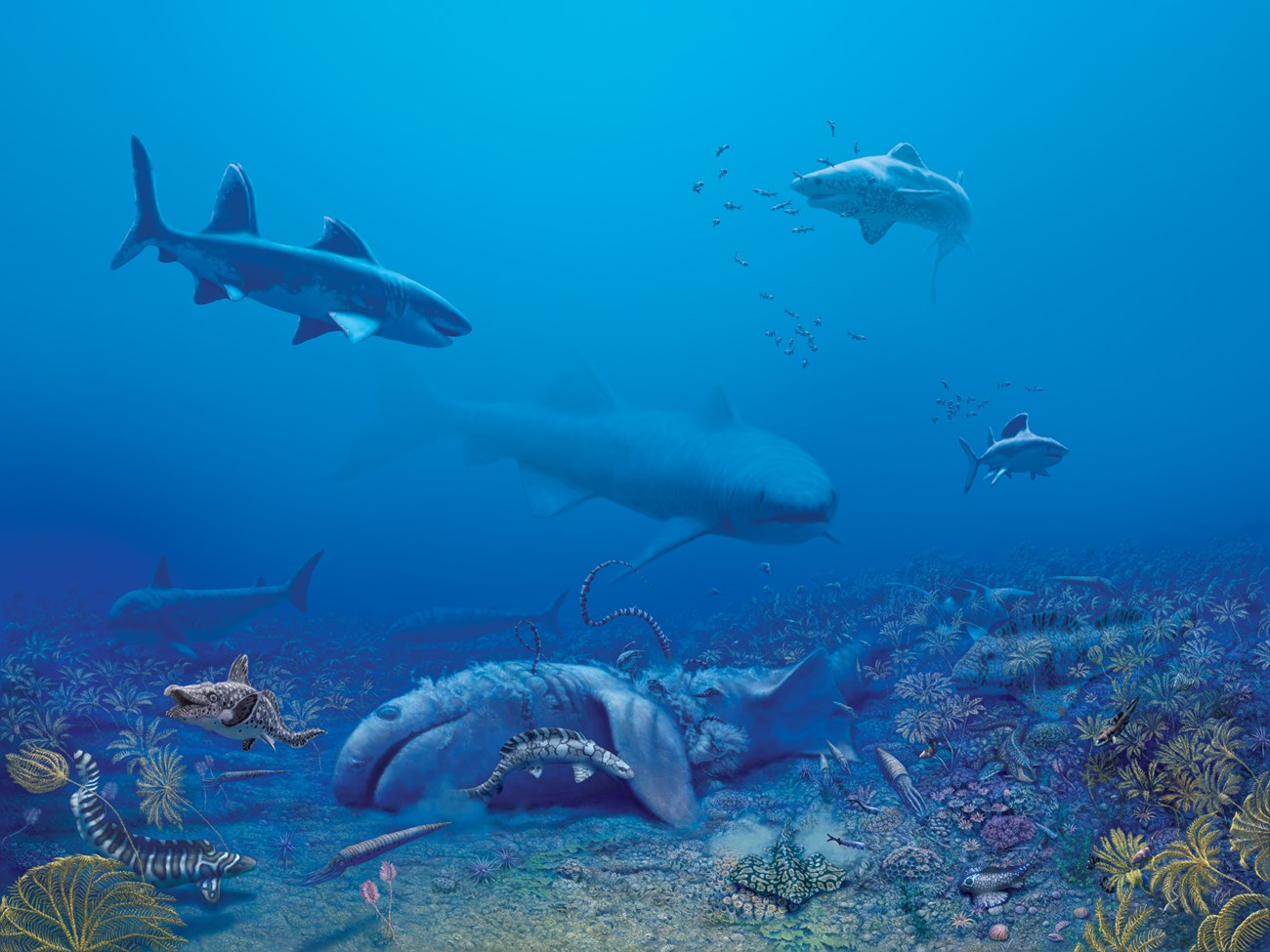
Painting by Julius Csotonyi. NPS image.
Introduction
A team of paleontologists, cave specialists, and park rangers at Mammoth Cave National Park have discovered a trove of fossil treasures that has yielded one of the most diverse Mississippian shark faunas in North America. At least 40 different species of sharks and their relatives have been identified, including 6 new species. Rare preservation of three-dimensional skeletal cartilage documented in Mammoth Cave allows us to understand the anatomy and relationships of these ancient sharks.
Paleontological Resource Inventory
The discoveries in remote cave locations in Mammoth Cave National Park were made during an ongoing paleontological resources inventory that began in November 2019. The Inventory goal is to identify the many types of fossils associated with the rock layers exposed outside and within the caves in the park. Several of the caves in the park were known to contain the fossil remains of ice age mammals in unconsolidated deposits and fossils of ancient marine organisms preserved within the limestones in which the caves developed.
Paleo Environment
The 325 million-year-old fossil-rich limestones of the Mammoth Cave System were formed during the Late Paleozoic, during a time period known to geologists as the Mississippian Period. The park staff reported a few fossil shark teeth exposed in the cave walls of Ste. Genevieve Limestone in several locations. Fossil shark specialist John-Paul (JP) Hodnett of the Maryland-National Capital Parks and Planning Commission was recruited to help identify the shark fossils, which were primarily teeth and fin spines. Since most of the skeleton of sharks is composed of cartilage, rather than bone, the skeletons of sharks are rarely preserved as fossils.
SHARKS!
The fossil shark specialist, JP Hodnett, and park staff quickly discovered and identified many different species of primitive sharks from specimens in the rocks lining the cave passages in Mammoth Cave. Hodnett said,
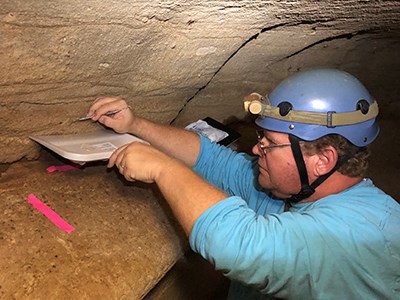
NPS photo.
“I am absolutely amazed at the diversity of sharks we see while exploring the passages that make up Mammoth Cave. We can hardly move more than a couple of feet as another tooth or spine is spotted in the cave ceiling or wall. We are seeing a range of different species of chondrichthyans [cartilaginous fish] that fill a variety of ecological niches, from large predators to tiny little sharks that lived amongst the crinoid [sea lily] forest on the seafloor that was their habitat.”
More than 40 different species of fossil sharks and relatives have been identified from Mammoth Cave specimens in the past 10 months and the fossil survey continues. Among this fossil shark assemblage, there appears to be at least six fossil shark species that are new to science. Those species will be described and named in a forthcoming scientific publication.
Most of the shark fossils have been discovered in areas inaccessible to visitors on cave tours, but photographs, artists’ renditions, and three-dimensional models are being prepared for the visitors to view and explore in park exhibits and websites. Jack Wood, who is gathering data for the 3D models, said,
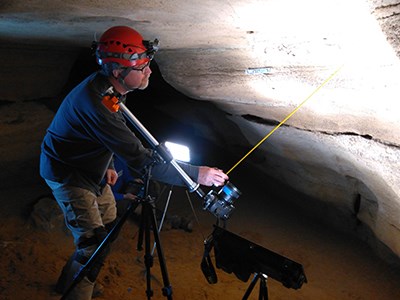
NPS photo.
"Since so few people will be able to view these extraordinary fossils in-person, due to the remote and difficult-to-reach locations they are found within the cave, the 3D models will allow the curious public and other scientists to see these rare fossil sharks."
A Work of Art
A new painting showing some of the Mississippian shark and invertebrate fauna from Mammoth Cave has been recently completed by paleoartist Julius Csotonyi and is being premiered here in celebration of National Fossil Day 2020—October 14, 2020.
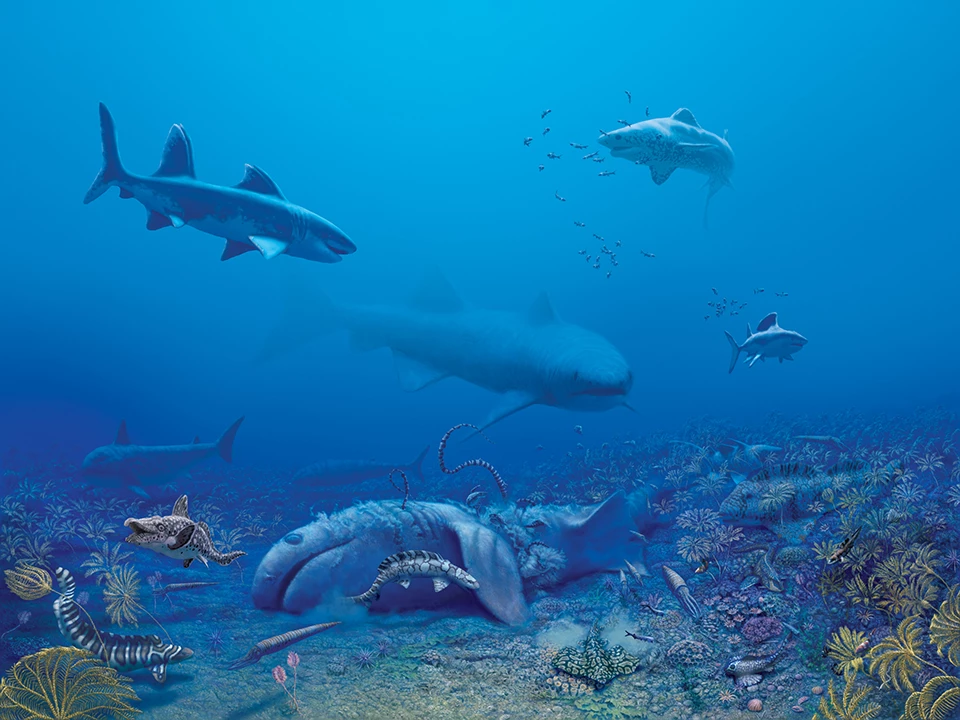
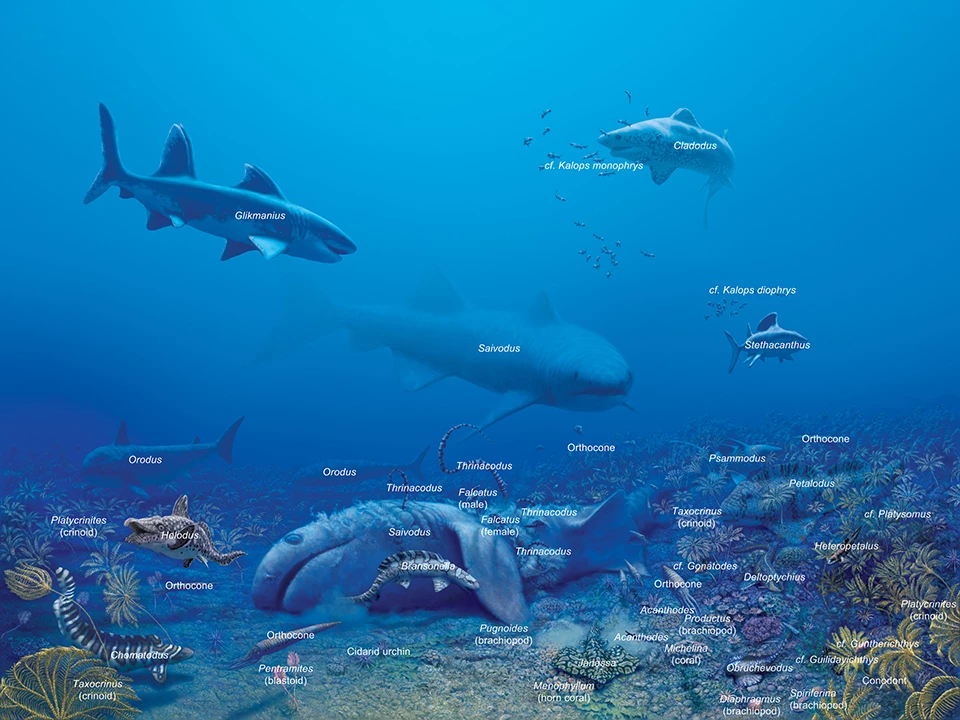
Left image
Credit: Painting by Julius Csotonyi.
Right image
Credit: Painting by Julius Csotonyi with species labels.
Mammoth Cave Virtual Collections—Fossils in 3D
In addition to this rich diversity of primitive sharks at Mammoth Cave, two partial cartilaginous skeletons of different species of sharks occur within Mammoth Cave. One specimen was discovered by a caver with the Cave Research Foundation and the other has been known by the park guides for years. The preservation of cartilage in layers of Paleozoic rock is a very rare occurrence and moved the team to thoroughly document these specimens. National Park Service geologist Jack Wood lugged equipment through narrow cave passages during an expedition to capture photogrammetric images of the two rare specimens. Wood produced interactive 3-D models of the cartilaginous shark remains featured below.
Mammoth Cave Geoheritage
Rick Toomey, Cave Resource Management Specialist and Research Coordinator at Mammoth Cave National Park is also a vertebrate paleontologist. Toomey said,
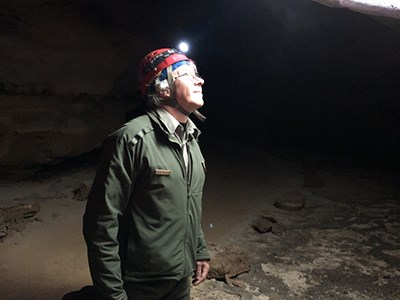
MPS photo.
“We here at Mammoth Cave are very excited to find that we have such an important set of fossils at the park. Although we have known that we had a few shark teeth in the limestone exposed in the cave, we never imagined that we would have the abundance and diversity of sharks that JP Hodnett has identified.”
NPS Paleontology Program
Paleontological resource inventories, like the one underway at Mammoth Cave National Park, have helped to document fossil resources in the National Park Service. To date, paleontological resources are known from at least 280 different national parks throughout the United States. National Park Service Senior Paleontologist Vincent Santucci said,

NPS photo.
“Paleontological resource inventories are fundamental to the management of non-renewable fossils. These inventories enable us to establish baseline fossil data capturing the scope, significance, distribution, and management issues related to park fossils. Many new and important fossil discoveries are tied to field inventories, as demonstrated at Mammoth Cave National Park, expanding our understanding of the fossil record in the national parks.”
Related Links
-
Mammoth Cave National Park (MACA), Kentucky—[MACA Geodiversity Atlas] [MACA Park Home]
Last updated: May 26, 2023

